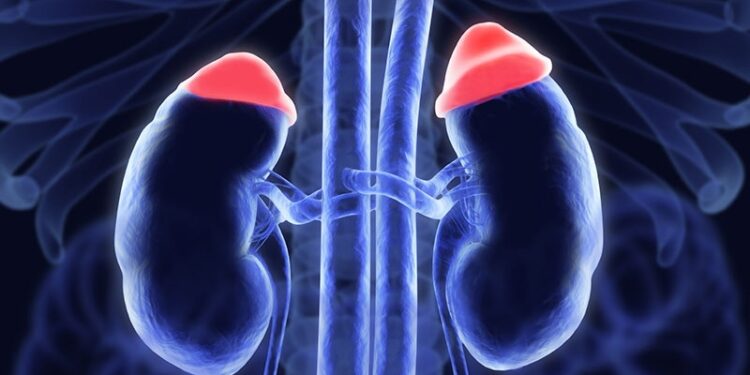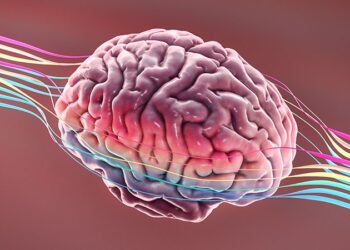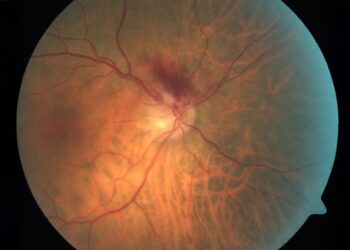Orlando, Florida — New data add to the evidence supporting use of crinecerfont for the treatment of congenital adrenal hyperplasia (CAH) due to 21-hydroxylase deficiency, in both adults and children.
The latest findings from the company’s pediatric and adult phase 3 trials suggest that crinecerfont enables the dual goals of decreasing glucocorticoid dose to physiologic range while also reducing androgen excess. In adults, the drug leads to normalization of reproductive hormone levels at 1 year. The new data were presented at the 2025 annual meeting of the American Association of Clinical Endocrinology (AACE).
In classic CAH, lack of the adrenal-specific enzyme 21-hydroxylase leads to deficient production of both cortisol and aldosterone production. The absence of endogenous cortisol results in increased secretion of corticotropin-releasing factor and adrenocorticotropic hormone (ACTH), which in turn drive excess production of adrenal androgens.
Untreated, excess androgens can cause accelerated growth, early puberty, advanced bone maturation, and reduced stature in children. Adolescent girls can develop irregular menses, while testicular adrenal tumors can arise in boys. Both sexes can develop hypogonadism and/or impaired fertility in adulthood.
Treatment involves use of glucocorticoids to replace the missing cortisol, but supraphysiologic doses have been typically required to also control the excess androgens. High glucocorticoid exposure can result in multiple adverse outcomes including reduced bone density, obesity, insulin resistance, type 2 diabetes, hyperlipidemia, and hypertension.
In December 2024, the US Food and Drug Administration approved crinecerfont in combination with glucocorticoids in adults and pediatric patients aged 4 years and older with classic CAH. Crinecerfont is an oral, selective corticotropin-releasing factor type 1 receptor antagonist that acts in the pituitary to decrease adrenal androgens production independently of glucocorticoids.
Approval was based on the results of two separate phase 3 trials, CAHtalyst Pediatric and CAHtalyst Adult. In both trials, the drug enabled more physiological glucocorticoid dosing.
“The point of crinecerfont is that by taking care of suppressing the ACTH and androgens, then the steroids can potentially be dosed at the level needed to replace the missing cortisol and not additionally to suppress the ACTH and androgens, because crinecerfont is doing that part for you,” adult study investigator Vivian H. Lin, MD, executive medical director, Neurocrine Biosciences, Inc., told Medscape Medical News.
Asked to comment, David C. Lieb, MD, professor of medicine at Eastern Virginia Medical School, Norfolk, told Medscape Medical News that crinecerfont appears to be “pretty impressive,” in that the mechanism of blocking ACTH release “is like shutting off the system from above so you can just give people the steroids they need and not more. If you can lower the amount of glucocorticoid therapy that children and adolescents or adults need, that’s fantastic, because presumably it’s associated with reductions in cardiovascular risk and risk for fractures and all those other things, [including] growth issues in kids.”
From an adult fertility standpoint, Lieb added, “in the past, women with CAH were sort of under the impression that they couldn’t have kids, or they may have even been told that they couldn’t. But the truth is that with control of their disease, they can have children. You have to make sure that they’re controlled and plan it out.”
During pregnancy and delivery, “you have to watch certain things, because they’re adrenally insufficient. You have to be thoughtful about preparing them for that. But this is exciting because it may help women who otherwise might have difficulty controlling their androgen production to control it better, and maybe improve their ability to have children.”
In Children, Most Achieved Androstenedione and/or Glucocorticoid Reduction
The new pediatric data were presented at AACE by Patricia Y. Fechner, MD, medical director of the CAH program at Seattle Children’s Hospital, and professor of pediatrics at the University of Washington School of Medicine, Seattle.
In CAHtalyst Pediatric, a total of 103 children aged 4-17 years were randomized, 69 to crinecerfont and 34 to placebo. All but three remained in the trial at 28 weeks. Glucocorticoid doses were kept stable for 4 weeks and then reduced if possible based on androstenedione levels to reach a target glucocorticoid dose of 8-10 mg/m2/day while maintaining or improving androstenedione relative to baseline.
Changes in glucocorticoid doses and morning androstenedione levels were analyzed using waterfall charts based on individual patient data at baseline and week 28. Overall, at 28 weeks, 90% of those in the crinecerfont group vs 21% in the placebo group achieved one or more thresholds for androstenedione reduction (≥ 30% from baseline or > 1.5x to < the upper limit of normal) and/or glucocorticoid reduction (≤ 11 mg/m2/d or a reduction of ≥ 2.5mg/m2/d).
In contrast, no patients in the placebo group achieved a physiologic glucocorticoid dose, and nearly 70% still had elevated androstenedione levels (above the upper limit of normal) despite supraphysiologic glucocorticoid dosing (> 11mg/m2/day).
At week 28, 30% (n = 20/67) in the crinecerfont group reached a physiologic glucocorticoid dose while maintaining or improving androstenedione levels vs none of the 31 with placebo.
The drug was generally well tolerated. The most common adverse reactions were headache (25% vs 6% for placebo), abdominal pain (13% vs 0%), fatigue (7% vs 0%), nasal congestion (7% vs 3%) and epistaxis (4% vs 0%). There were no adrenal crises reported in the double-blind treatment period.
The results demonstrate “that clinicians can focus on reducing androgens, lowering glucocorticoid doses, or both, based on the individual patient’s treatment goals,” Fechner concluded.
In Adults, the Potential for Improved Fertility
New data from the adult study were presented by Sonal Vaid, MD, a fellow at the National Institutes of Health Clinical Center, Bethesda, Maryland. At week 24 (the end of the double-blind, placebo-controlled trial period), a higher percentage of male participants who had abnormal hormonal levels (luteinizing hormone below the lower limit of normal or above the upper limit of normal, or androstenedione/testosterone ratio ≥ 0.5) at baseline had normalization of those levels with crinecerfont compared to placebo (47% vs 22% for luteinizing hormone and 19% vs 5% for the ratio), despite greater glucocorticoid dose decreases with crinecerfont.
After week 24, there was an open-label period in which all participants received crinecerfont up to 1 year. During that time, there were further increases in the percentages of patients with normalization of luteinizing hormone (65%) and the androstenedione/testosterone ratio (24%), while glucocorticoid doses remained significantly reduced from baseline.
At month 12, patients randomized to placebo who switched to crinecerfont during the open-label period experienced normalization of luteinizing hormone (44%) and androstenedione/testosterone (24%), despite significant glucocorticoid dose reductions over that period.
The most common adverse reactions were fatigue (25% vs 15% for placebo), headache (16% vs 15%), dizziness (8% vs 3%), arthralgia (7% vs 0%), back pain (6% vs 3%), decreased appetite (4% vs 2%), and myalgia (4% vs 3%).
“Crinecerfont, a novel therapeutic option for reducing excess androgens and enabling the lowering of glucocorticoids to more physiologic doses, may also represent a promising approach to improving reproductive hormones in adults with CAH,” Vaid concluded.
Both studies were funded by Neurocrine Biosciences, Inc. Lin is a company employee. Fechner has received research support from Neurocrine Biosciences, Spruce Biosciences, and Diurnal Ltd. (now Neurocrine UK Ltd.), has served as an advisory board participant and as a consultant for Neurocrine Biosciences, and as a consultant for Eton Pharmaceuticals. Vaid and Lieb have no disclosures.
Miriam E. Tucker is a freelance journalist based in the Washington DC area. She is a regular contributor to Medscape, with other work appearing in the Washington Post, NPR’s Shots blog, and Diatribe. She is on X (formerly Twitter) @MiriamETucker and BlueSky @miriametucker.bsky.social
Source link : https://www.medscape.com/viewarticle/new-data-back-crinecerfont-congenital-adrenal-hyperplasia-2025a1000cc7?src=rss
Author :
Publish date : 2025-05-15 20:30:00
Copyright for syndicated content belongs to the linked Source.














